The 10 Most Beautiful Seascape Paintings
“When talking about seascapes, which paintings have made history? From Botticelli to Magritte, we have picked the 10 most celebrated works of art.
### 1. The Birth of Venus
This is one of the Uffizi Gallery’s most famous pieces. It is among the most renowned paintings of the Florentine Renaissance and undoubtedly the most well-known of Sandro Botticelli’s works. The figures in the foreground, especially the splendid figure of Venus, dominate the canvas to the point of almost making us forget that we are looking at a seascape. But the sea is there, its waters rippled by Zephyr’s warm and gentle westerly breeze. The sea symbolizes nature’s life-giving power, for the goddess is born of the sea foam and appears pure and perfect, standing on a giant seashell.
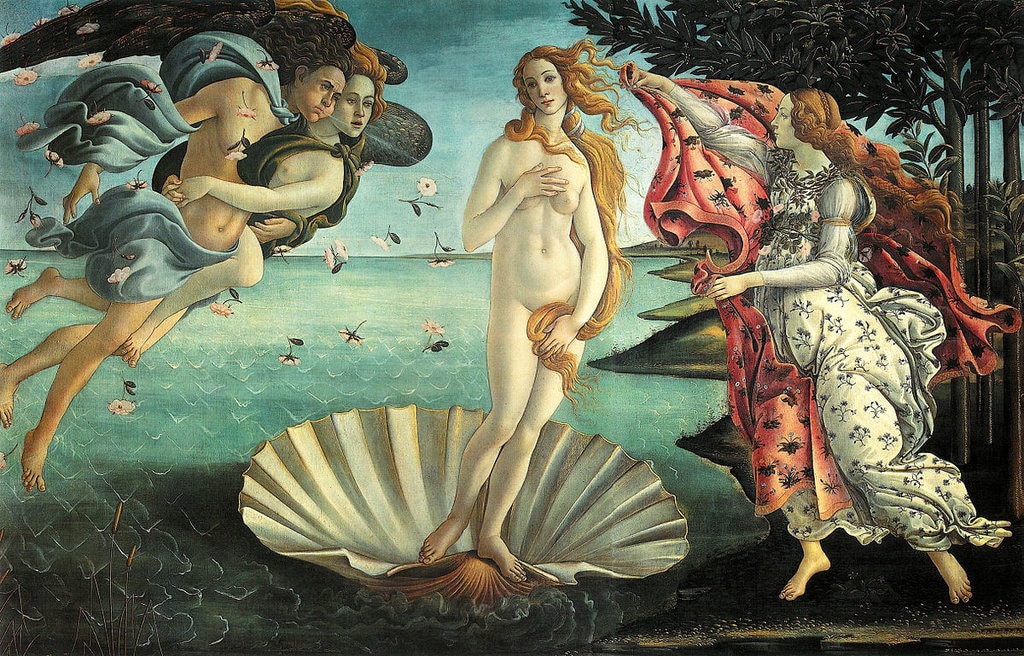
### 2. The Raft of the Medusa
A 16′ 1″ × 23′ 6″ canvas which recounts the tragedy of a shipwreck. Théodore Géricault began work on this piece in 1818 and took over a year to complete it. The result was a work of art which, due to its anatomical and expressive realism, has become known as an icon of French Romanticism. In this case, nature is not life-giving but lethal. It is a man who must succumb to its power, no longer able to control it: The intense green sea contrasts with the paleness of the figures on the scene; it hurls around the suffering, desperate shipwrecked passengers in an all-consuming storm. A source of inspiration for many artists-from any country or era-The Raft of Medusa is without doubt among the most beautiful works in the Louvre.
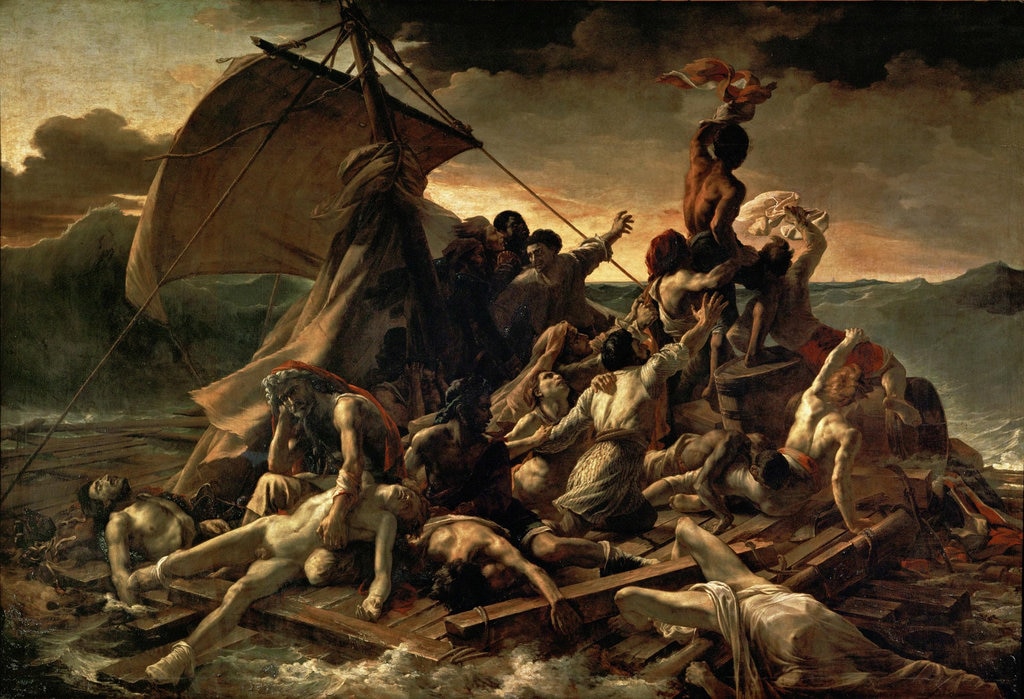
### 3. Impression, Sunrise
If The Raft of the Medusa is one of the most tragic and tumultuous sea-themed paintings, Impression, Sunrise is perhaps one of the most placid. Here, we are looking at the water in a port (Le Havre in Normandy), captured at dawn on a foggy, ethereal day. Signed by the renowned Monet, it is universally recognized as the embodiment of the Impressionist movement and all of its most defining characteristics. In particular, the painting’s location en plein air (that is, in the open air), produces art forms that express a moment’s visual impression through total immersion in nature. On this occasion, the sea is the poetic muse of the artist who, with short brush strokes, commits to canvas a landscape of lights, reflections and feelings.
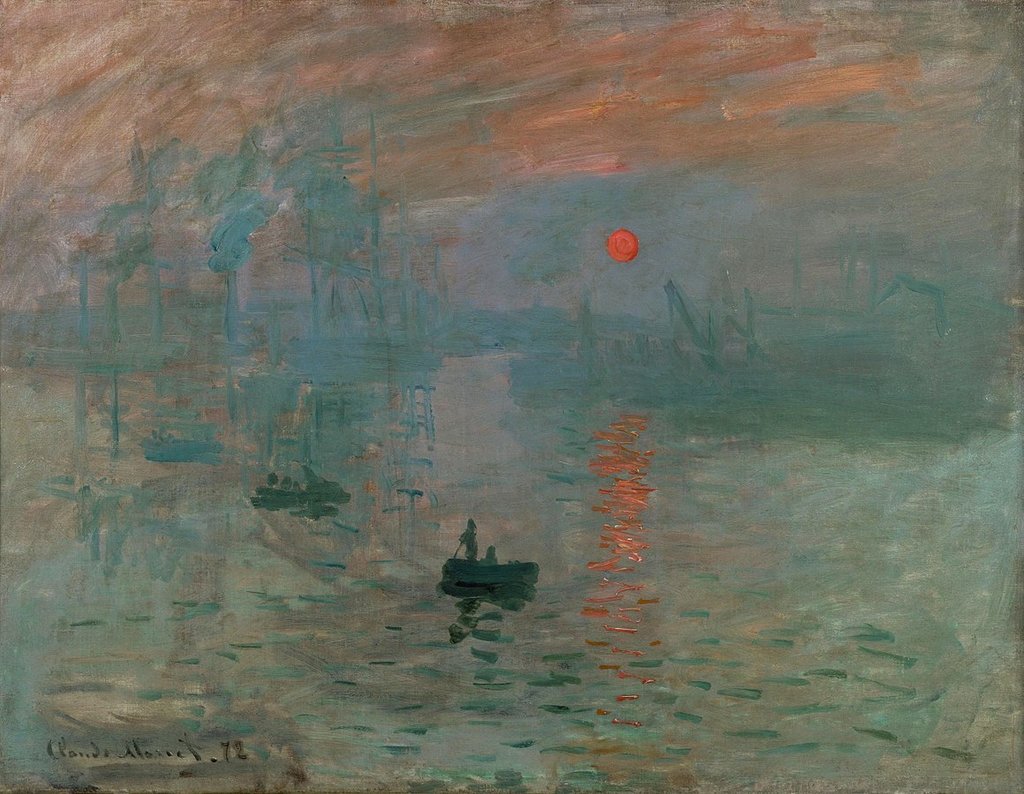
### 4. The Fighting Temeraire
Like Géricault, William Turner was among the most influential painters of the Romantic movement, as well as one of the first to anticipate Impressionism. He found fame particularly through his landscape paintings and, as in this instance, through his seascapes, in which storms and shipwrecks often powerfully overwhelm observers, guiding them towards “the sublime, a sort of pleasure-inducing horror”. In The Fighting Temeraire, the sea loses its more violent nature, giving way instead to a poignant harmony. The subject of this painting cries out for this languid atmosphere since Turner is, in fact, depicting the “death” of the Temeraire, the Royal Navy’s heroic battle ship, which was sent to the scrapyard following its honorable service in the battle of Trafalgar. Through his original and masterly use of light and color, the artist pays tribute to the sun setting on a glorious past.

### 5. The Great Wave off Kanagawa
This is probably the most famous figurative work in all of Japanese art or, at least, the most well known in the West. The artist, Hokusai, produced this xylograph-the term used for a woodblock print-around 1830. It depicts three fishing boats caught in a storm at sea, with snow-capped Mount Fuji in the background. Water, man and land all blend into a harmonious blue and white composition, dominated in the foreground by the work’s undeniable central theme, the huge arching wave. Here, the sea becomes the favorite natural theme to open up instant communication channels, with its simple yet incredibly beautiful images, creating a flawless aesthetic effect.
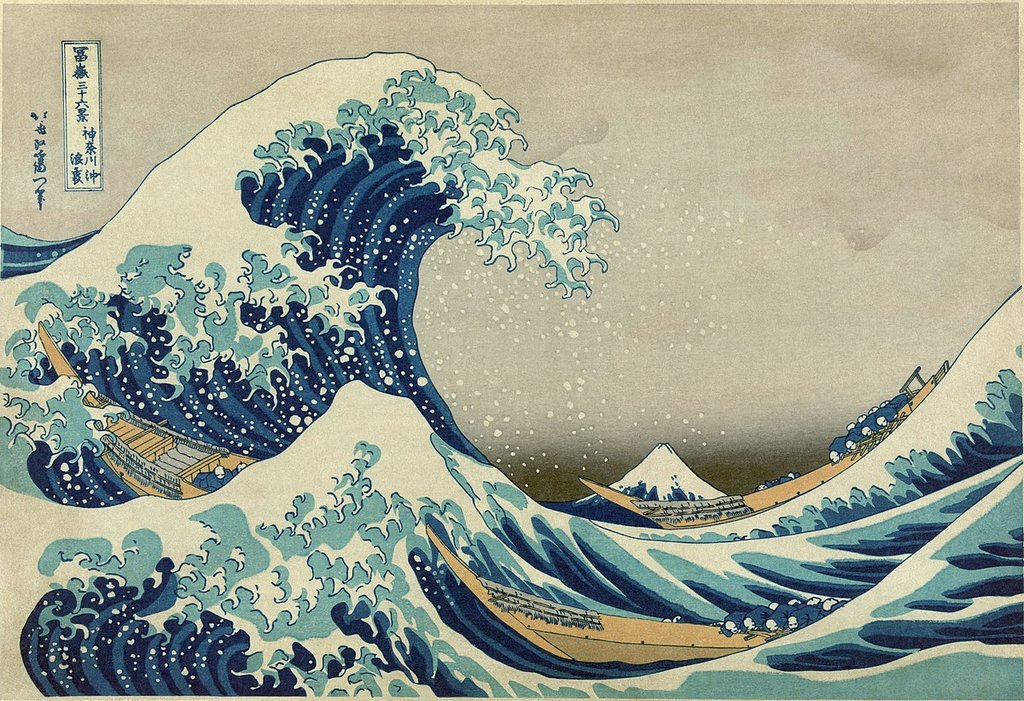
### 6. Girl at a Window
Salvador Dalì produced Girl at a Window in his early years as an artist, when he was beginning to develop his own style by experimenting with different artistic approaches. The landscape is not dominant here. Instead, the composition is balanced between the gray expanse of the sea, which can be seen through the window, and the girl who is leaning out to look at it. She is Aña Maria, Dalì’s younger sister, who he often painted during the 1920s. This is undoubtedly her most famous portrait, even though it depicts her from behind. Here, the sea is portrayed as the source of human meditation. The sea creates a link to a peaceful domestic scene which, with the missing left window, conceals a surreal nature.
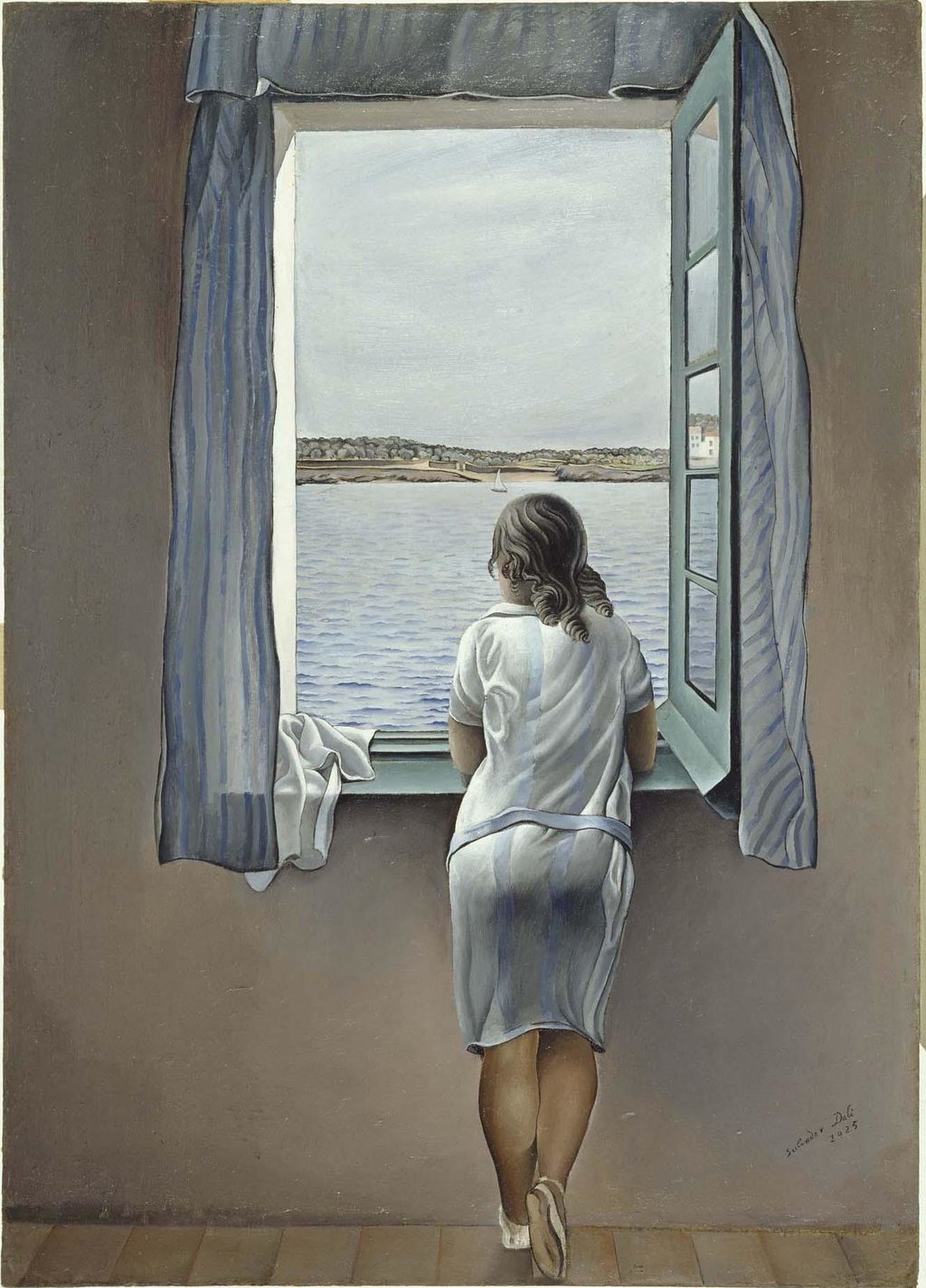
Courtesy of the Maria Sofia Museum
### 7. The Rotunda at Palmieri
Signed by the Tuscan painter Giovanni Fattori, The Rotunda at Palmieri is considered to be one of the greatest masterpieces of the nineteenth century art produced by the Tuscan Macchiaioli painters. All of the main distinctive features of their art is clearly contained in this painting. Fattori chose as his subject a group of seven ladies relaxing on the beach on Livorno’s seafront. It is an everyday scene which, following the tradition of Macchiaioli art, is far removed from purely classical themes. From a technical point of view, we can see how the colors are pure, defining the image through the juxtaposition of contrasting color hues that are lacking in contour. It is thanks to this bold experimentation that we can talk about the birth of a modern art in Italy in the second half of the nineteenth century.

### 8. Two Women Running on the Beach
The top 10 seascapes could not be without a Picasso. Géricault’s raging sea and Turner’s poignant reflections are but a distant memory when it comes to Two Women Running on the Beach. The Cubist master uses solid Mediterranean colors to define massive figures that, nevertheless, surprisingly seem to ignore their own weight. The two large women abandon themselves to an energetic and lively freedom dance, which overcomes every physical barrier and blends with the landscape in a whirlwind of harmony. In this context, sea, sky and land become real human conquests. The painting dates back to the 1920s, when Picasso loved to spend summers in Brittany with his wife Olga and son Paulo. This was a particularly happy time, as is clear from this work.
### 9. Chalk Cliffs on Rügen
Romantic painting was widely dedicated to landscape themes, particularly those involving the sea. It is no surprise then, that a third artist who belonged to this movement can be added to the list along with Géricault and Turner. The artist in question is Caspar David Friedrich who, perhaps more than the rest, expresses the so-called “sense of the sublime” in his works. Chalk Cliffs on Rügen is one of his iconic works. The high rocky cliffs, closed on the upper part by the branches of two trees, create a circular framework that opens out onto the sea. Friedrich’s portrayal of this magnificent natural scene leaves the observer breathless, just like the man in the picture, who is absorbed in deep meditation while he peers at the horizon. Only by contemplating nature can the man be reunited with his own spirit and experience the sublime.
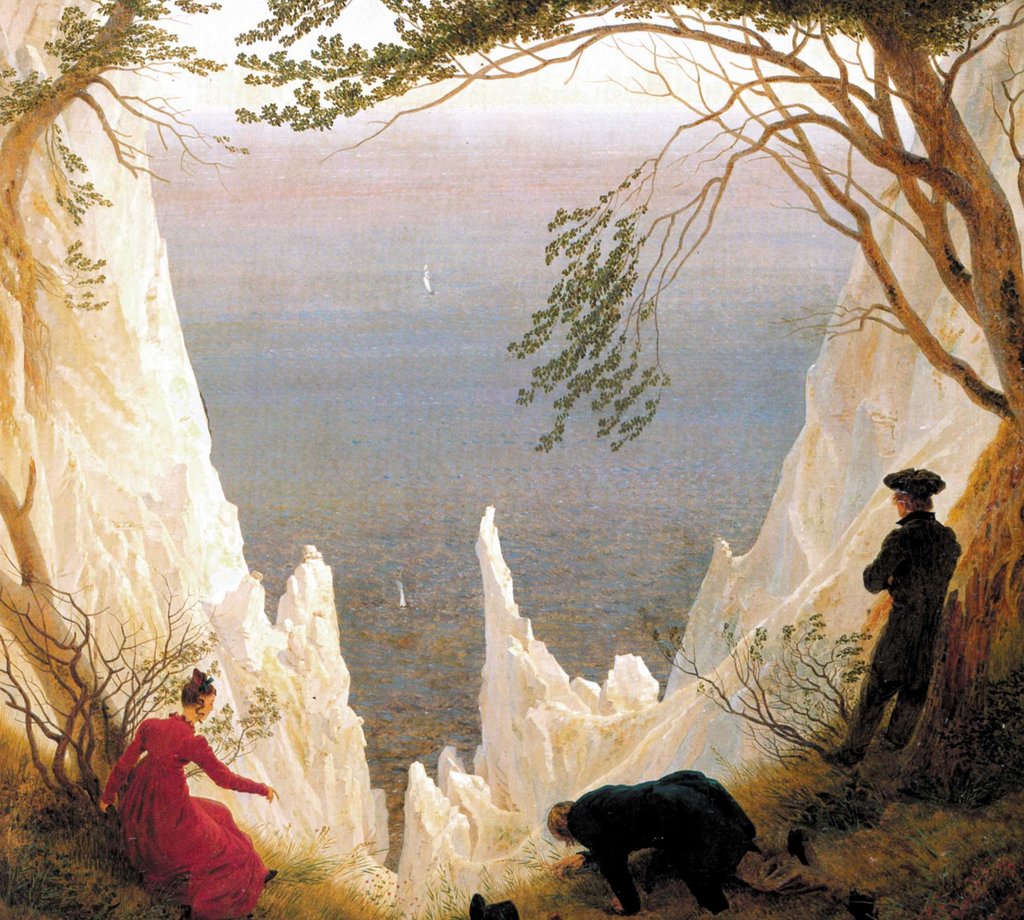
### 10. The Human Condition II
Together with Dalì, Magritte is undoubtedly the artist who is most representative of the Surrealist movement. His style is unmistakable, with its simple design, solid colors, and everyday subjects that portray enigmatic and unexpected scenes. The titles of his works are mysterious to say the least, and they complete the surprise effect when studying paintings that are difficult to interpret. In The Human Condition II, the Belgian painter concentrates on the “painting within a painting”, a recurring theme in his artistic works.
The meaning is more or less this: A painting is merely an object that reflects the artist’s mental representation of reality, rather than reflecting reality itself. Everything we think of as the external world is simply a projection of our internal experience. Here, the sea is the crucial element to illustrate this theory: The artist chooses to “fix it” firmly on the canvas, but how can this be considered realistic when waves cannot exist without movement? The unrealistic stillness of Magritte’s sea expresses the human condition.”
More Articles With Art
Discover the very best museums and galleries through virtual tours. From London to New York, explore these online museums without leaving your home!
Find everything you need for a fun visit to the York Art Gallery with this comprehensive visitor’s guide.
Discover the top art galleries in London to experience some history and culture on your holiday.
Discover the top art galleries in Manchester to experience culture and history on your next holiday.
Visiting the spas and Georgian buildings of Bath? Check out our visitor’s guide to the Fashion Museum.